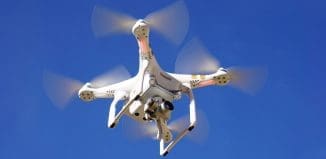New Communications Technologies Offered to First Responders
This post is also available in:  עברית (Hebrew)
עברית (Hebrew)
A couple of noteworthy communications technologies were recently examined by a first responder agency that evaluated them for public safety use.
The US Department of Homeland Security Science and Technology Directorate (S&T)’s First Responder Group (FRG), a community of first responders who work with the Directorate strive to create innovative and practical developments for the first responder community.
As reported on newswise.com, FRG evaluated the Mobile Ad-hoc Networking (MANET) system, a communications system originally developed for military use, and an Android Tactical Awareness Kit (ATAK) to determine if they could improve communications and public safety situational awareness.
The group conducted a field test in collaboration with the New York City Police Department’s (NYPD’s) Emergency Service Unit (ESU) and with technical assistance from S&T’s partners Johns Hopkins University Applied Physics Laboratory (JHU/APL) and Persistent Systems.
Earlier MANET systems proved effective to address mission-based communication needs for the U.S. military and other DHS components. DHS S&T is exploring this capability with the NYPD to overcome such factors as wireless coverage dead spots and service congestion associated with existing network infrastructures. “Ensuring our public safety agencies have the necessary technologies to pass operative data and video during an emergency remains a top priority for the Department of Homeland Security,” said Cuong Luu, S&T program manager for the MANET project. “By testing systems in operational environments, we can observe how equipment supports the mission-specific needs of local law enforcement agencies, and help determine its communication range capabilities for supporting voice, video, and geographic location capabilities in a complex urban environment.”
The main component of the MANET system, the Persistent Systems’ MPU5 Smart Radio (MPU5), can be used to transmit data, video and voice communications between several radio nodes and can augment land mobile radio (LMR) communications and cell phone networks as necessary. It can also be used with various accessories, including antennas and can withstand extreme temperatures, as well as water immersion, shock and salt fog.
The ATAK is an Android application developed by the Air Force Research Lab which shows the geographic location of all MPU5 on the network and provides text, chat, video, and picture sharing capabilities on a moving map display. The feedback during the field test in New York city was largely positive. Participants appreciated the software tool’s ability to provide video streaming and live location updates of each personnel. The tool augmented voice communications since the team could see locations on a map, along with a live video stream from the team lead.






























